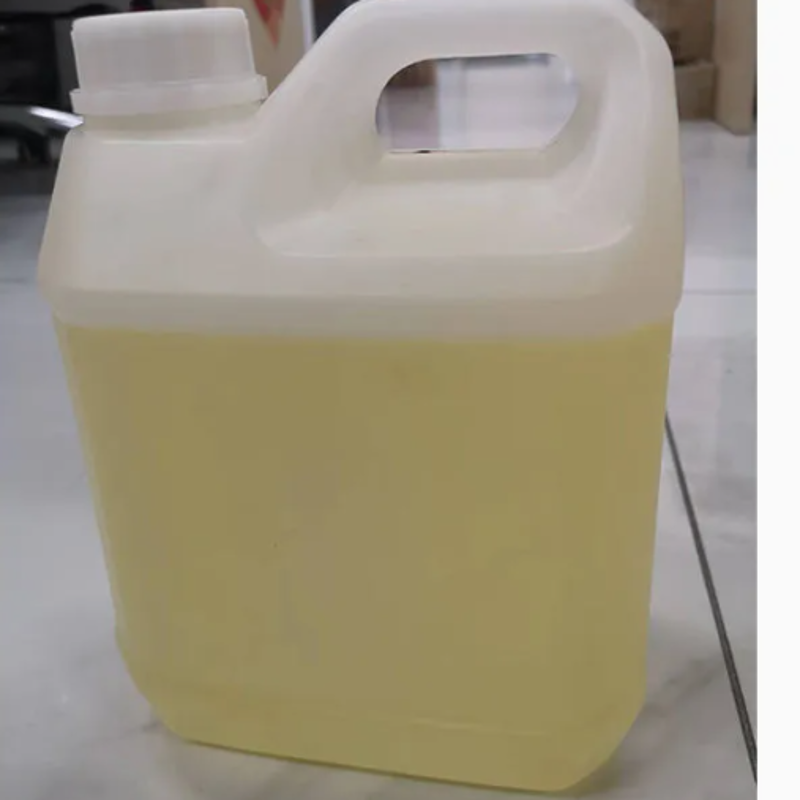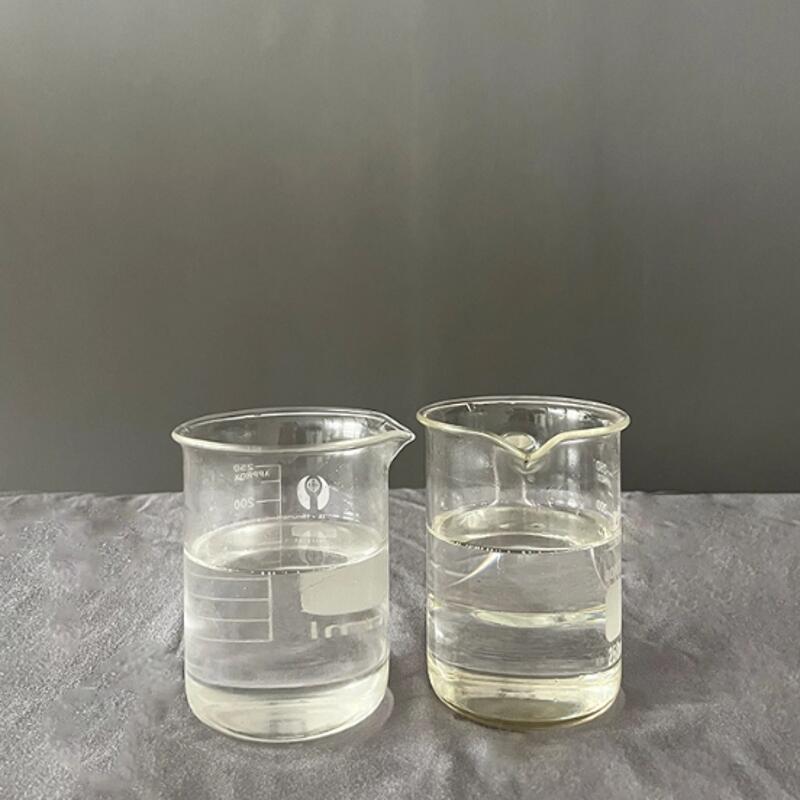-
Categories
-
Pharmaceutical Intermediates
-
Active Pharmaceutical Ingredients
-
Food Additives
- Industrial Coatings
- Agrochemicals
- Dyes and Pigments
- Surfactant
- Flavors and Fragrances
- Chemical Reagents
- Catalyst and Auxiliary
- Natural Products
- Inorganic Chemistry
-
Organic Chemistry
-
Biochemical Engineering
- Analytical Chemistry
-
Cosmetic Ingredient
- Water Treatment Chemical
-
Pharmaceutical Intermediates
Promotion
ECHEMI Mall
Wholesale
Weekly Price
Exhibition
News
-
Trade Service
PLA (polylactic acid) is a new type of degradable material, which can be obtained by extracting starch from renewable plants, then biologically fermented to obtain lactic acid, and finally prepared by chemical synthesis
.
PLA has good degradability and can be completely degraded by microorganisms.
Products made of PLA can be completely degraded into CO2 and water after use, and are non-toxic and non-irritating
.
PLA has mechanical properties similar to polypropylene, while its gloss, clarity and processability are similar to polystyrene, and its processing temperature is lower than that of polyolefin.
The processing method of plastic is processed into various packaging materials, fibers and nonwovens, etc.
, which are widely used in industrial, agricultural, medical and civil fields
.
PLA production method
PLA production methodThe preparation method of PLA can be generally divided into direct polycondensation method and ring-opening polymerization method (lactide method)
.
The direct polycondensation method, also known as the PC method or the one-step method, uses the activity of lactic acid to remove carboxyl groups and hydroxyl groups in the presence of dehydration groups, so that the lactic acid molecules are polycondensed to form low-molecular-weight polymers, and then the molecules are directly dehydrated at high temperature.
One of the processes to condense PLA into PLA is usually melt polymerization, solution polymerization and melt-solid phase polymerization, among which melt polymerization is the most widely used
.
The ring-opening polymerization method is also called the ROP method, that is, the lactic acid monomer is first dehydrated and cyclized to synthesize lactide, and then the recrystallized lactide is polymerized to obtain PLA.
This method can obtain PLA with extremely high molecular weight.
It is about 700,000-1 million (low molecular weight PLA can be rapidly degraded, which is conducive to drug release and is suitable for the medical field; high molecular weight PLA has important commercial value in the fiber, textile, plastic and packaging industries), so it is the current industrial The polylactic acid synthesis process mainly used in the above
.
The production process of lactide is extremely demanding, mainly because the purification is difficult and the production scale in China is small
.
At present, there is no large-scale production capacity of polylactic acid in China, mainly because the production process requirements from lactic acid to lactide are relatively high
.
Lactic acid has two optical isomers, L-lactic acid and D-lactic acid, due to its chiral structure
.
Therefore, after the polycondensation reaction occurs, four kinds of polylactic acid polymers will be produced, namely L-polylactic acid, D-polylactic acid, DL-polylactic acid, and meso-polylactic acid
.
The content of different types of polylactic acid will lead to differences in the performance and characteristics of PLA products.
At present, L-lactic acid is generally used as a raw material to synthesize lactide to further produce L-type polylactic acid, and the relative molecular weight of the product is relatively high
.
In China, the mixture of D-lactide and L-lactide is used as raw material, and the synthesized lactide will contain meso-lactide.
This meso-lactide is extremely difficult to purify in the production process, resulting in the production of The rate is very low, which greatly increases the production cost of lactide
.
Polylactic acid has high strength, high modulus, and good transparency and air permeability, but its crystallization rate is too slow during processing, resulting in prolonged processing cycles and poor heat resistance, which greatly limits the application field of polylactic acid products
.
At present, the most common way to improve the performance of polylactic acid is to add a nucleating agent, and in actual enterprise processing applications, talc is the most commonly used inorganic nucleating agent for polylactic acid, which can improve the stretching and bending of polylactic acid, etc.
Mechanical properties, improve its heat resistance
.
PLA Industry Status Quo
PLA Industry Status QuoAt present, the global PLA production capacity is about 653,500 tons, and the main PLA manufacturers are mainly concentrated in the United States, China, Thailand, Japan and other countries
.
American Nature Works is the world's largest PLA manufacturer, with an annual production capacity of 180,000 tons, accounting for about 30% of the global PLA production capacity
.
The production of PLA in China started relatively late, and the main raw materials of lactide mainly rely on imports
.
Due to technical reasons or lack of raw material lactide, some PLA plants cannot operate stably or are in a shutdown state.
The actual effective production capacity is about 48,000 tons/year, and the output is about 18,000 tons/year
.
The main production enterprises in China are Zhejiang Hisun Bio, Anhui Fengyuan Group, Henan Jindan Technology,
etc.
The production capacity of the PLA project under construction is about 300,000 tons/year, and the long-term planned production capacity is about 2 million tons/year
.
With China's Jindan Technology and Fengyuan Group, relying on the accumulation of technology in the field of biological fermentation, they have successfully produced qualified lactide raw materials, which provides the possibility for the rapid expansion of PLA production capacity in China in the future
.
PLA market outlook
PLA market outlookPLA has a wide range of applications and has been successfully used in plastic packaging, biomedicine, and textile fibers
.
The harmless properties of PLA make it have broad application prospects in the field of packaging, mainly used as food packaging, product packaging and agricultural mulching films
.
PLA has a smooth surface, good transparency and excellent barrier properties, and can completely replace PS (polystyrene) and PET (polyethylene terephthalate) in many places, thereby reducing the problem of plastic pollution
.
PLA degradable fiber integrates degradability, moisture conductivity and flame retardancy, as well as molding, application and degradability, and is widely used in the field of textile fibers
.
At the same time, PLA has excellent biocompatibility and good physical properties.
After its degradation, it generates carbon dioxide and water, which is harmless to the human body and can be degraded naturally, so it is increasingly used in the field of biomedicine, such as tissue consolidation (such as Bone screws, fixation plates and plugs), wound dressing (eg artificial skin), drug delivery (eg diffusion control), and wound closure (eg application of sutures)
.
In recent years, the number of PLA enterprises in China has begun to increase.
Under the influence of the domestic plastic restriction order, PLA will still be in short supply in 2020, and it is expected to have unlimited potential in the future
.







